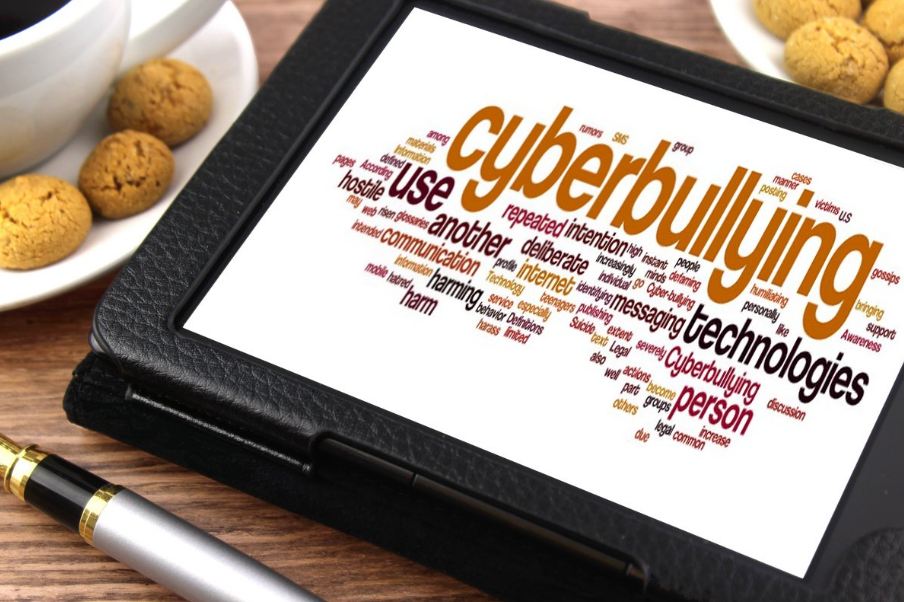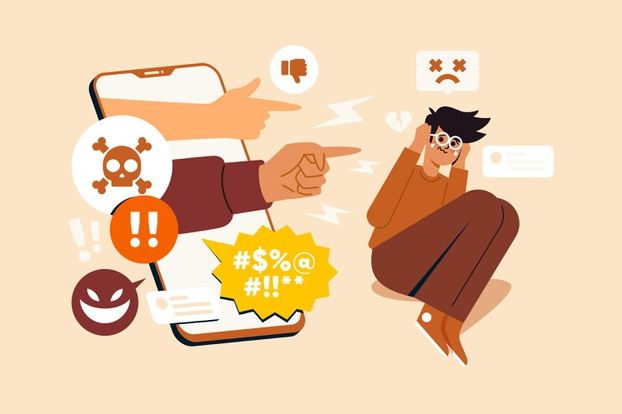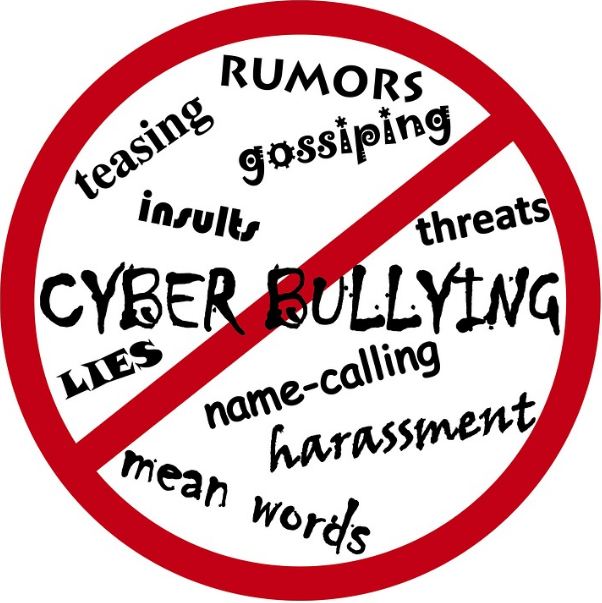Bullying has been entrenched in our society for as long as we can remember, but today this malady has become more pervasive than ever. Unfortunately, due to the universal adoption of social media in the past decade, teens are now susceptible to a whole another form of bullying: cyberbullying.
A survey by the Cyberbullying Research Center revealed that out of 25,000 students in middle and high school, over thirty-six percent reported experiencing bullying at least once.
As this social plague continues bedeviling people, especially youngsters, around the world, it is our duty as educators, parents, and even students, to educate ourselves about the detrimental effects of cyberbullying on its victims and how we can protect each other from it. We have prepared a holistic guide on this issue that covers all the ground and includes in-depth information about different types of cyberbullying, how you can protect yourself from it, and social media safety tips.
But before jumping into any of that, we must first understand what cyberbullying is and how to identify it.
What is Cyberbullying?
Cyberbullying occurs when someone bullies you through the use of digital technology. It mostly takes place on social media platforms like Instagram and Twitter, but it can also happen on gaming and texting platforms like Discord and WhatsApp. Just like face-to-face bullying, cyberbullying is a repeated behavior with the intent to humiliate, scare, threaten, or anger the targeted party. It can leave long-term effects on the victim’s psyche and mental health, blighting their school performance and leading to self-destructive habits.
It is not limited to just abusive messages and emails; instead, cyberbullying can be manifested in a plethora of different manners. Below we have listed the various forms of cyberbullying youngsters experience in today’s world:
Different Types of Cyber Bullying
Trolling
Trolling is undoubtedly the most widespread and oldest cyberbullying technique, dating back to the 2000s when social networking sites were just kicking-off. It means to intentionally humiliate or insult someone by making inflammatory statements on the internet, often with offensive language, with the sole intent to trigger an emotional response from them. The troll feels amused by inciting an angry reaction from the victim party.
Outing
Outing involves publicly humiliating someone by posting or sharing their private information, such as text messages, emails, and embarrassing videos/images. Today, when everything is one click away, such information can reach thousands of people, especially strangers, in mere seconds and garner unwanted attention. Outing can have grave repercussions for the victim as even if the bully decides to delete his/her post, the information could have fallen into the wrong hands by then and could resurface later on.
Impersonation
This type of cyberbullying harms not only the victim but also their friends and families. Fraping, one form of impersonation, involves accessing someone’s social media account without their permission and posting or sending inappropriate content on their behalf. While fraping might seem like a harmless prank to some teens, impersonating someone and jeopardizing their reputation can have dire consequences. Impersonating also includes setting up fake profiles and assuming the victim’s identity to sabotage their online relationships.
Harassing
Sending someone abusive/hurtful messages or threats on social networking sites is considered harassment. It includes posting derogatory comments on the victim’s social media profile or constantly pestering them with threatening or abusive messages, often laced with foul language, in a private chat room via messaging platforms.
Cyberstalking
Cyberstalking is a form of cyberbullying involving stalking, harassing, and threatening someone through the internet. Cyberstalkers often track their victim’s movements and make attempts to approach them when they are alone outside, often with the intent of harm. Many cyberstalkers are pedophiles trying to groom teenagers or youngsters into having sexual relationships with them.
Once you are aware of the different forms of cyberbullying, it becomes easier to identify such troubling behaviors and address them. Teens often have trouble differentiating between a joke and bullying, especially if the attack is coming from someone in their social circle. Although friends joke around all the time, sometimes it can go too far. If someone keeps bothering you, even after you have vocalized your feelings and told them to stop, it is bullying, and you must stand up against it!
How to Protect Yourself from Cyberbullying
If you are a victim of cyberbullying, raise your chin and do not feel alone. Even though you might be feeling helpless and overwhelmed right now, there are steps you can take to protect yourself. Below are some ways you can handle different types of cyberbullying and get the help you need:
Tell the Offender It is Not Okay
Even though some people might tell you to ignore the bully and keep going on with your life as any retaliation will only aggravate the situation, it is entirely untrue. By ignoring bullying, you are putting not only yourself but also others at potential risk. Without any fear of backlash, the bully’s confidence will bolster, and he/she will become more intimidating. Therefore, it is imperative to call out a bully whenever you recognize a disrespectful display of behavior from them. Do not be afraid of speaking up, for your silence will only aggravate the bully’s actions. You do not have to suffer this disturbing experience in silence, so be vocal about your feelings, and warn them of the consequences of continued bullying.
Reach Out to a Trusted Adult
Experiencing bullying can be traumatizing, but that does not mean that you have to suffer it all alone. You should not be ashamed of yourself for being bullied, so reach out for emotional support. It is necessary to let your parents know what is going on and get the required help. You can also reach out to some other adult you trust, like a school counselor, a close family member, or your favorite teacher. However, if you do not wish to talk to someone you know in a personal capacity, you can always call a helpline and seek professional help.
Block and Report the Bully
If the bully’s impudent behavior continues even after you have warned them, cut them off and cease any communication with them immediately. Block them on the social media platform they are bullying you and any other site they might use to reach out to you. If they are calling or texting you on your cell phone, block their phone number. Next, you must immediately report their behavior to the social media support system. Social networking sites have a fast-responding support system and will quickly take down any bullying content from their site. Bullies that are inflicting harm on others are often hiding behind the mask of anonymity, so if you know who they are, deanonymize them on the internet and alert others.
Always Take a Screenshot
Taking screenshots and gathering evidence can prove quite useful when substantiating a formal complaint. Nowadays, users can delete not only their public posts but also their text messages on almost all social media platforms. Therefore, taking a screenshot and keeping an electronic copy of the offending post or text can be used to prove your case even if the bully deletes it later on.
Do Not be Afraid to Contact the Authorities
In some cases, cyberbullying is not just a display of problematic behavior that you can correct by reporting the bully’s social media account or blocking their number; instead, it is a crime that needs to be reported. For instance, if someone has private images of you or your child that can be considered child pornography, it is mandatory to contact the authorities and take legal action against the offending party. Moreover, immediately call the police or emergency services in your state if the bully makes threats of violence to you. To find about specific cyberbullying laws in your state, check the following websites:
Take a Break and Avoid Self-Blame
At times, our virtual life becomes too overwhelming, so it is crucial that we log out of our social networking sites from time to time and take a breather. Turning off your phone and doing activities that you enjoy can alleviate the trauma of cyberbullying. In the face of such a traumatizing experience, it is easy to resolve towards self-blaming instead of holding the guilty party responsible. When the offender is someone they were friends with, cyberbullying victims, especially teens, start believing that what they experienced was an emanation of their actions. At such times, teachers and parents should offer emotional help to the victims and boost their morale.
Social Media Safety Tips
While social media platforms can offer matchless opportunities to connect with far-off friends and promote your talent to a huge audience, it also has a dark side that can disrupt your life. To help you stay safe when using the internet, we have listed some social media safety tips and precautions below:
- Always protect your phone and social media account with a strong password, and never share those passwords with anyone.
- Never display your personal information, such as a home address, or phone number, to the public: always keep your settings to Friends Only.
- Refrain from opening attachments or clicking on any links sent by strangers.
- Do not respond to trolls or abusive posts.
- Secure your social media accounts by setting up security questions and taking other necessary steps.
- Do not allow any social media site or program to track your location.
The Takeaway
Experiencing cyberbullying can be agonizing, and it can leave a lifelong scar on your mental health and psyche. However, the only way to protect yourself and others from this plague is to identify and report it. If you or someone around is experiencing cyberbullying, raise your voice and call out the bully, or the vicious cycle will never stop! Living in a society, it is our duty to keep each other’s backs, so spread the word by sharing our guide with your friends and family.




